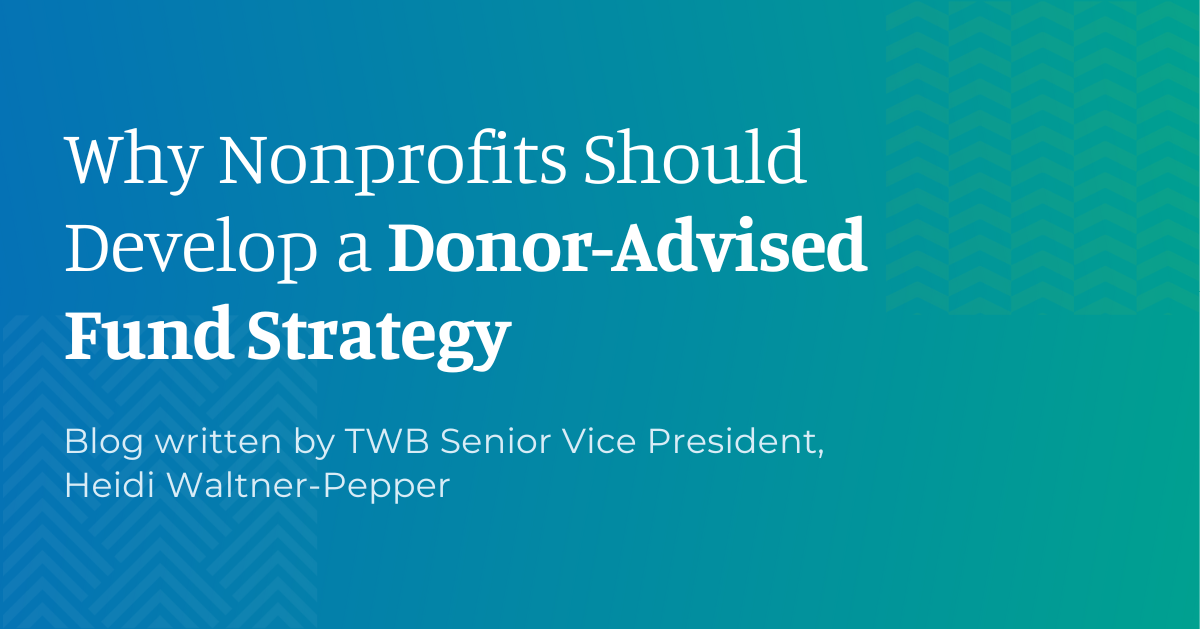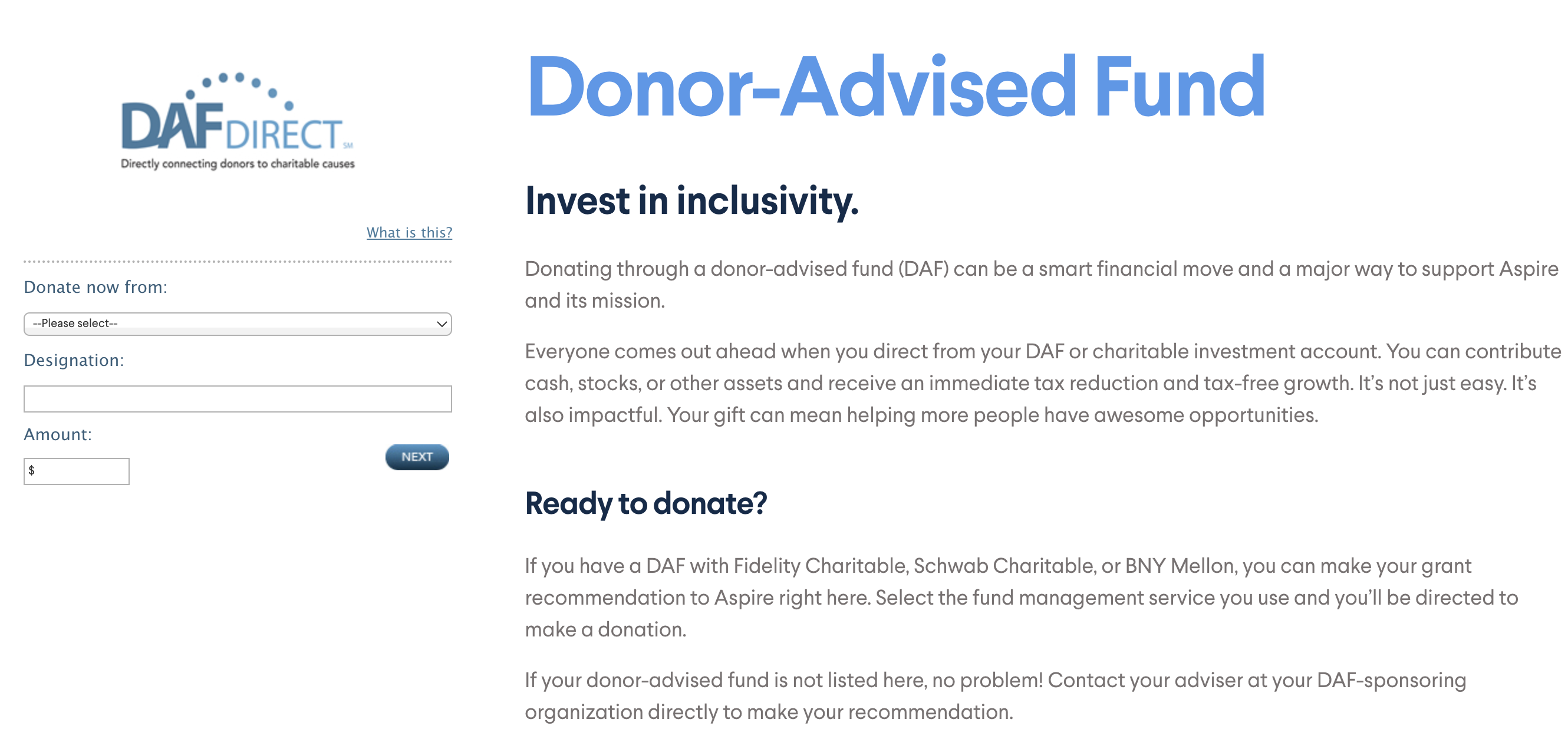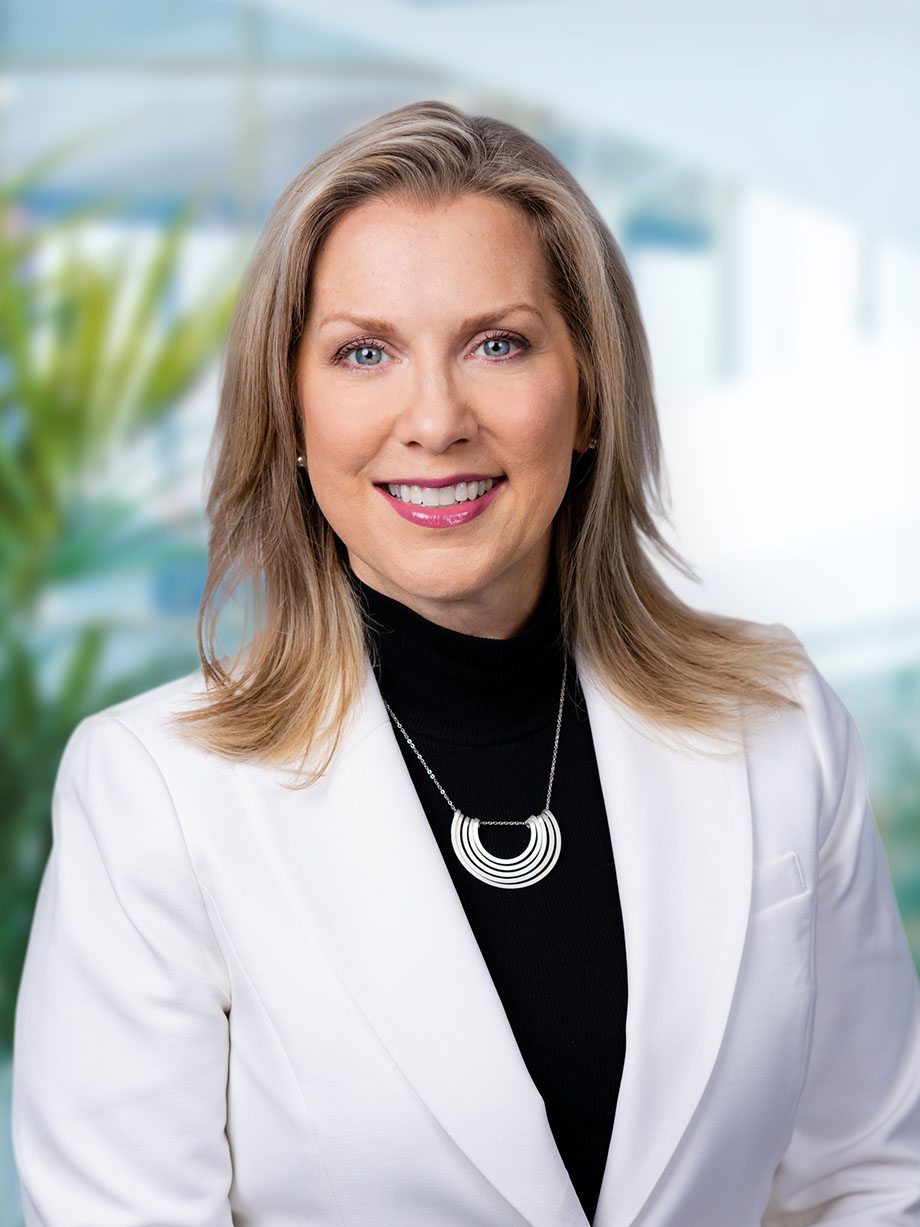Why Nonprofits Should Develop a Donor-Advised Fund Strategy

What is a donor-advised fund?
With donor-advised funds (or DAFs), donors can make a contribution to a fund and receive an immediate charitable tax deduction. The fund can grow tax-free, while the donors can distribute gifts (or grants) to nonprofits from the fund over time.
Donor-advised funds are managed through a sponsoring organization, which commonly are commercial investment management companies or community foundations.
What are the benefits of DAFs for donors?
DAFs are a great option for donors who want to maximize tax benefits and invest their donations for the future. DAFs simplify record keeping for charitable giving and are easy for donors to open and use.
DAF donors can be individuals, families, or groups. Some donors use DAFs as an alternative to a private foundation since DAFs have better tax deductions, less overhead, and greater flexibility on how grants are distributed.
What are the opportunities DAFs provide to nonprofits and fundraisers?
Donor-advised funds are another vehicle that donors can use to support their charities of choice, and they can lead to larger total amounts of gifts for a nonprofit. Nonprofits can benefit from the tax-free growth of the DAF, receiving more than they might otherwise with a direct gift from that individual.
In 2020, assets held in DAFs totaled $160 Billion. This is a massive opportunity for nonprofits!
What are some of the challenges with DAFs?
The downside of DAFs seems to be that many donors are not distributing the funds they have in their DAFs. This means it is important for fundraisers to develop a strategy to discover who their supporters with DAFs are, and also to develop specific strategies to engage these supporters.
Some commercial fund providers (such as Fidelity, Schwab, and Vanguard) will default DAF donations as anonymous gifts if the DAF donors do not specifically designate to identify themselves. This makes it a challenge for nonprofit fundraisers to thank and steward these donors.
How can fundraisers properly document and thank DAF donors?
If the grant was not received anonymously, DAF gifts should be recorded in the database so that the individual donor can be thanked. The sponsoring organization will receive the tax credit since the individual donor has already received a tax deduction after contributing to the DAF. Nonprofits should develop a process for labeling DAF donors in the donor database, so they can pull lists to thank donors, develop internal reporting, and do targeted outreach.
If grants from DAFs are received anonymously, fundraisers may need to do some research and outreach to match donor names with DAF grants. Nonprofits should craft messaging to ask donors and prospects if they have DAFs, discover what sponsoring organization they use, and ask their donors to make sure they’re sharing their names and contact information with their fund sponsors.
If the donation was received via a community foundation, fundraisers may be able to discover the individual donor by looking through the foundation’s materials, including annual reports and donor stories.
The individual donors should be thanked, rather than the fund sponsor, with the gift amount and sponsoring organization named in the letter. This might look like:
“Thank you for your recent donation of [Amount] through [Sponsoring Organization], received on [Date].”
How can fundraisers educate more donors about DAFs?
Fundraisers should begin including more consistent messaging about DAFs in their regular donor outreach and all fundraising materials, including direct mail and email appeals.
Nonprofits can also create mailers, brochures, and inserts to mail to prospective donors informing them of the option of giving via DAFs and adding information on their website on the benefits of giving via DAFs. Additionally, including a widget like DAF Direct can allow donors to recommend grants from their DAF directly on the nonprofit’s website or through online fundraising campaigns. This will help to simplify and streamline the donation process.

TW&B client Aspire Chicago has a web page dedicated to information on donor-advised fund giving, including the DAF Direct widget.
Fundraisers can also build relationships with local community foundations to share current information about their organizations, so those holding DAFs through a community foundation can be made aware of their organization, mission, greatest needs, and current goals.
How should you train development staff on DAF gifts?
All development staff should have a basic understanding of what donor-advised funds are and how they work. Fundraisers can talk to major gifts and planned gift prospects to discover if they have donor-advised funds, and distribute informational materials to prospective donors to inform them of the benefits and tax advantages.
Staff should also be trained to ensure careful record keeping of donors. Good data is essential for pulling lists to thank donors, providing reports on DAF donors to leadership, and practicing targeted outreach and stewardship of these donors.
Fundraisers should know that DAFs cannot be used to fulfill a pledge of multi-year installments. Instead of pledges, fundraisers should ask DAF donors for “letters of intent” since they are not legally binding. Also, DAF grants cannot be recommended if there are material or incidental benefits to giving, such as sponsoring a fundraising table where goods and services are offered.
How can fundraisers steward donors with DAFs?
It’s important to steward DAF donors by meeting face-to-face, and the adoption of Zoom and other video conferencing services makes it possible for staff to build personal connections with donors who live further away or are immunocompromised.
For projects that involve new buildings or renovations, arranging in-person or virtual tours can help donors see the impact of their gifts. Nonprofits should connect with their DAF donors through consistent check-ins, emails, phone calls, and project updates that address what motivates that donor to give.
How do DAFs fit into your larger fundraising strategy?
Providing information about DAFs can be integrated into the work fundraisers are already doing, by including language on DAFs year-round on the website and all direct mail and email appeals, and by initiating conversations about DAFs with the donors who are being stewarded.
DAFs can be suggested to donors as a way to increase giving, by blending gifts with other charitable vehicles such as appreciated stock, IRA contributions, and family foundation giving.
Donor-advised funds are a giving strategy that works well for a lot of donors, and a thoughtful fundraising strategy can help nonprofits engage these donors to reach their goals.
Written with assistance from Alyssa Bray.

Comments
Questions or comments? Join the conversation!